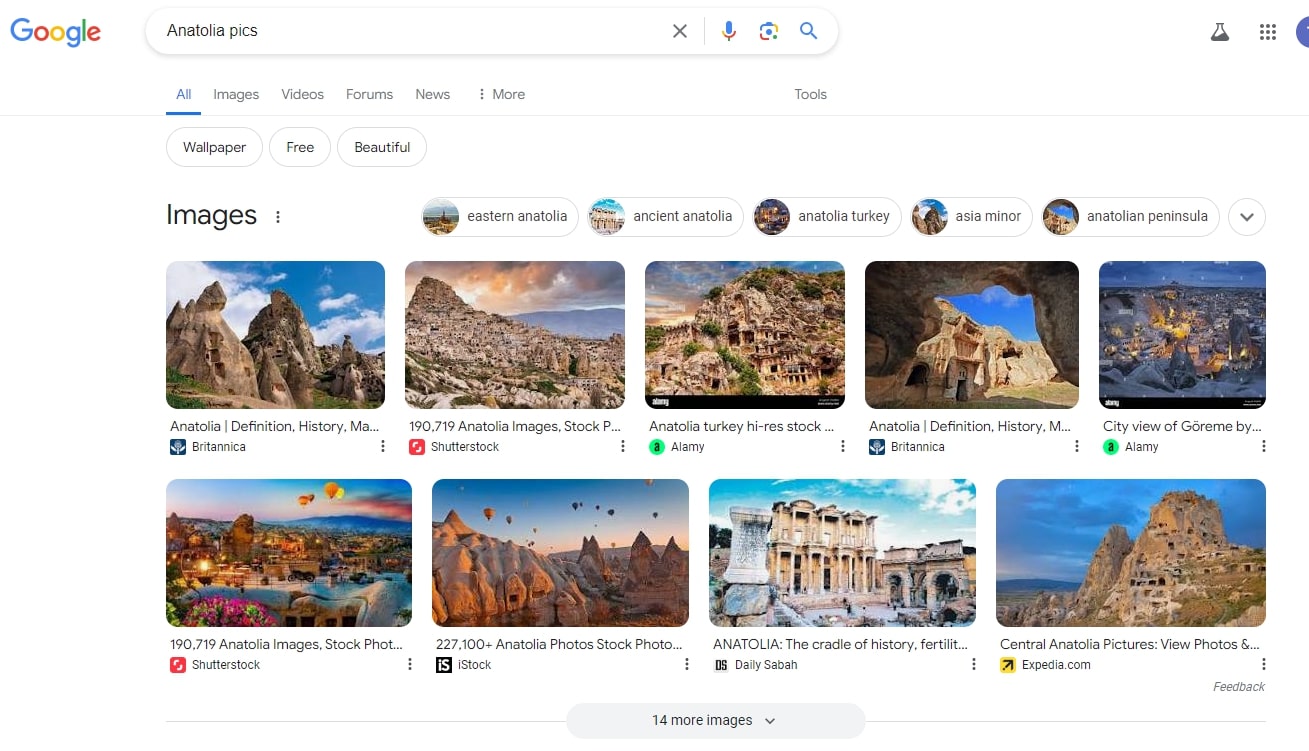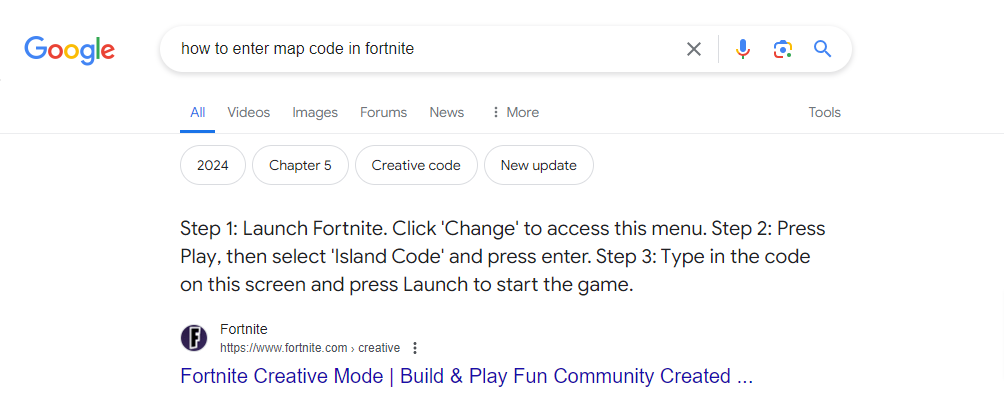Despite Google’s frequent algorithm updates, keyword research remains a cornerstone for inbound marketers aiming to optimize their websites for search. In this post, we’ll explore what keyword research entails, its importance, the process of conducting effective keyword research for your SEO strategy, and how to select the right keywords for your website.
Table of Contents
What is keyword research?
Keyword research involves identifying and analyzing the search terms people use in search engines, aiming to leverage this data for specific objectives, typically for SEO or marketing. This process helps uncover target queries, assess their popularity, determine ranking difficulty, and gather other valuable insights.
Why keyword research Is Important?
Keyword research is crucial for identifying the best keywords to target and understanding the queries your target audience is searching on Google. Insights from these search terms can inform both your content and broader marketing strategies.
People use keywords to find solutions during their online research. By ensuring your content appears in these searches, you can attract more traffic. Therefore, your content should meaningfully incorporate these keywords. Inbound methodology emphasizes creating content based on what people want to discover, rather than what we want to tell them. Essentially, our audience seeks helpful content that answers their questions, and it all begins with keyword research.
Conducting keyword research offers numerous benefits, the most significant being:
Idea About Marketing Trends
Effective keyword research offers valuable insights into current marketing trends, enabling you to focus your content on relevant topics and keywords that your audience is actively searching for.
Traffic Growth
By identifying the most relevant keywords for your content, you can achieve higher rankings in search engine results, thereby attracting more traffic to your website.
Customer Acquisition
If your business creates content that other professionals seek, you can meet their needs and guide them through the buyer journey from the awareness stage to the point of purchase. By researching keywords for their popularity, search volume, and intent, you can address the questions your audience most frequently asks.
Keywords vs. Topics
SEO has evolved significantly over the past decade, transforming the role of keywords in our ability to rank well in search results. While keywords remain important, SEO professionals focus more on the intent behind them and whether the content addresses that intent (we’ll discuss intent further shortly). However, keyword research is far from outdated.
Keyword research reveals what topics your audience cares about and, with the right SEO tools, shows how popular these topics are. The key term here is topics. By identifying keywords with high monthly search volumes, you can organize your content into relevant topics or categories. These topics will then guide your keyword targeting and content creation efforts.
Elements of Keyword Research
Relevance
Google ranks content based on relevance, which is where search intent comes into play. Your content will only rank for a keyword if it aligns with the searchers’ needs. Moreover, your content must be the best resource available for that query. Google won’t rank your content higher if it offers less value than existing content on the web.
Authority
Google prioritizes sources it considers authoritative. To become an authoritative source, enrich your site with helpful, informative content and promote it to earn social signals and backlinks. If you’re not seen as an authoritative resource on a topic, or if the keyword’s SERPs are dominated by major sources like Forbes or Healthline, your chances of ranking are lower unless your content is exceptional.
Volume
Ranking on the first page for a specific keyword is pointless if no one searches for it, akin to setting up a shop in a ghost town. Search volume, also known as MSV (monthly search volume), indicates how often a keyword is searched per month across all audiences.
How to Research Keywords for Your SEO Strategy
- Identify important and relevant topics based on your business.
- Populate these topic buckets with relevant keywords.
- Consider the impact of user intent on keyword research and analyze accordingly.
- Explore related search terms to expand your keyword pool.
- Utilize keyword research tools effectively.
Follow a step-by-step keyword research process to generate a targeted list of terms. After that, develop and implement a robust keyword strategy focused on the terms critical to your business’s success.
I’ll outline a keyword research process for you to follow, enabling you to create a targeted list of terms to focus on. This will help you develop and implement an effective keyword strategy, ensuring you rank for the search terms that matter most to your business.
Step 1. Compile a list of important and relevant topics based on what you know about your business.
To start, consider the broad topics you aim to rank for and organize them into general buckets.
Aim for around five to ten topic buckets that are crucial to your business. These buckets will serve as the foundation for identifying specific keywords later in the process.
If you’re a frequent blogger, these topics likely align with your most common blog subjects. Alternatively, they may reflect the key themes in sales discussions.
Think from the perspective of your buyer personas: What topics would your target audience search for, which you want your business to be discovered for?”
Here is a list of a few content buckets for an SEO business.

This data helps you assess the significance of these topics to your audience and determine the range of sub-topics you should cover to effectively target that keyword. To delve deeper into these sub-topics, let’s proceed to step two.
Step 2. Fill those topic buckets with keywords.
Now that you’ve identified several topic buckets to focus on, it’s time to pinpoint keywords that fit into those categories. These are phrases you believe are crucial for ranking well in search engine results because your target audience likely searches for these terms.
For example, if one of your topic buckets is SEO services’ for a Marketing business, brainstorm relevant keyword phrases such as:
– SEO Services
– Web development services
– what is On-page SEO?
– How to generate leads with SEO?
– How to do email outreach for getting backlinks
– top SEO tools
The goal at this stage isn’t to finalize your keyword list but to generate a comprehensive list of potential phrases your prospective customers might use when searching for content related to these topics. Later in the process, we’ll refine these lists to avoid overwhelming ourselves.
Additionally, consider leveraging website analytics tools like Google Analytics, Google Search Console to uncover keywords your site already ranks for. Focus on organic search traffic data to identify relevant keywords across all your topic buckets.
Step 3. Understand how intent affects keyword research and analyze accordingly
As mentioned earlier, user intent has become a critical factor in achieving high rankings on search engines like Google.
Today, it’s more important that your web page addresses the specific problem or need a searcher intends to solve, rather than just incorporating the exact keyword they use. How does this impact your keyword research process?
Keywords often have multiple meanings, making it essential to understand the searcher’s intent behind them. For instance, the keyword “how to start a blog” could refer to starting a blog post or launching a blog website.
The searcher’s intent determines how you should approach your content. If your strategy focuses on those interested in creating a blog website, you must ensure the keyword’s intent aligns with your content.
To ascertain a keyword’s intent, enter it into a search engine and review the types of results displayed. Ensure the content Google shows matches your intended purpose for that keyword.
Step 4. Research LSIs and related search terms.
Here’s a proactive approach you might have already considered during keyword research. If not, it’s an effective method to expand your keyword lists.
When brainstorming additional keywords related to a specific topic, explore the related search terms that appear at the bottom of the SERP when you enter a keyword into Google. These related keywords can inspire new ideas and broaden the scope of keywords you’re evaluating.
Step 5. Use keyword research tools to your advantage
Keyword research and SEO tools are invaluable for generating additional keyword ideas, focusing on exact match and phrase match keywords derived from the concepts you’ve developed thus far.
Here are some of the most popular SEO tools:
Ahrefs
Top SEO reports and keyword research often leverage Ahrefs Keywords Explorer, known for its comprehensive insights. Their webmaster tools provide detailed analytics for verified domains, offering extensive data on backlinks and organic keywords.
SE Ranking
I found SE Ranking to be slightly less intuitive compared to other tools. When I searched for the keyword ‘keyword research,’ it prompted me to start a free 7-day trial and requested the domain I wanted to track immediately.
While the initial data provided was helpful, accessing the keyword research and suggestion tools required some navigation.
Once located, however, the tools offered comprehensive data and generated valuable insights. Moreover, I appreciated that SE Ranking didn’t require a credit card for the trial, which is always a positive aspect for me.
SEMrush Keyword Magic Tool
Semrush stands out as a highly comprehensive SEO tool provider, so it was no surprise that their keyword magic tool is equally robust. You’ll need to create a free account to access it. Once logged in, you can enter your keyword to generate a list of related keywords and refine results according to your specific needs.
Ubersuggest
I’ve been a longtime supporter of Ubersuggest. It offers up to three free searches daily and is incredibly user-friendly. Besides assessing individual keyword performance, you can explore related keywords and conduct quick reverse searches to identify your site’s current rankings. It’s among the simplest and most thorough free options available, with the only caveat being the limitations on free searches.
Google Keyword Planner
Google’s tools are consistently valuable. They’re free and provide direct insights. By signing in with your Google account, you can generate keyword ideas based on specific keywords or your website. When I entered my website, I received a list of 500+ potential keywords.
Keywords Everywhere
“Keywords Everywhere comes highly recommended by several colleagues of mine. It’s a browser extension that isn’t entirely free and requires a bit more setup compared to some online tools.
However, at $18 per year, it’s affordable for most users. Once I installed and configured the extension, signing up for their basic package was straightforward.
What’s particularly advantageous is its ongoing utility. Unlike platforms where you need to log in regularly, Keywords Everywhere integrates seamlessly into your browser.
It provides data on related keywords and similar searches every time you conduct a Google search, offering ample content ideas. Given its cost-effectiveness and depth of information, it’s become one of my preferred tools.
KW Finder
KWFinder is another user-friendly tool. Although you need to create an account to begin, it’s free and straightforward to get started. I swiftly began discovering top keywords after setting up my account.
How to Find and Choose Keywords for Your Website?
Here are 6 simple steps to find and finalize target keywords for your website:
- Utilize Google Keyword Planner to refine your keyword list.
- Focus on easily achievable opportunities first.
- Evaluate the monthly search volume (MSV) for selected keywords.
- Consider SERP features when selecting keywords.
- Ensure a balance of broad and specific keywords in each category.
- Analyze competitor rankings for these keywords.
Now that you have an idea about your potential target keywords, it’s time to do some trimming and lay off those keywords that are not beneficial for our website’s ranking.
Step 1. Use Google Keyword Planner to cut down your keyword list
In Google’s Keyword Planner, obtain search volume and traffic estimates for your targeted keywords. Use this data to guide your decisions and complement it with insights from Google Trends.
Keyword Planner can highlight terms with excessively low or high search volumes that may not contribute to a balanced strategy, as discussed earlier.
Before removing any keywords, review their trend history and future projections in Google Trends.
This tool provides visibility into whether low-volume terms could become more valuable investments over time.
If you’re facing a cumbersome list of keywords, Google Trends helps prioritize those showing upward trends, ensuring your focus is on the most promising opportunities.
Step 2. Prioritize long-tail keywords
When I talk about prioritizing low-hanging fruit, I mean focusing on keywords where you have a realistic chance to rank based on your website’s authority. Larger corporations often target high-volume keywords due to their established authority across various topics, which Google tends to reward.
Additionally, consider keywords with low competition. These are keywords that haven’t attracted multiple competitors vying for top rankings, offering you a potential advantage by default — if no one else is actively competing for them.
Step 3. Check the monthly search volume (MSV) for keywords you’ve chosen.
You should create content that aligns with what users are actively searching for, and monitoring MSV(monthly search volume) can assist in achieving this goal. Monthly search volume (MSV) indicates how frequently a specific search query or keyword is entered into search engines each month. Tools such as Google Trends provide insights into the most popular keywords within related clusters at no cost.
Step 4. Factor in SERP features as you choose keywords.
To leverage SERP feature snippets effectively, examine the keywords you’re targeting and observe the format of the top-ranking result. For a concise understanding of various SERP featured snippets, here’s an overview of their types.
Image Packs:
These are search results presented as a horizontal row of images within organic listings. To appear in an image pack, create content rich in images.

Paragraph Snippets
Featured snippets, also known as paragraph snippets, are brief text excerpts displayed prominently at the top of Google search results. Understanding user intent and providing concise answers can increase your chances of securing this spot.

List Snippets
List snippets, or listicles, are designed for posts that outline step-by-step processes, typically for “How To” searches. Crafting posts with clear, direct instructions and appropriate formatting can improve your chances of earning this snippet.

Video Snippets
Video snippets are short videos showcased at the top of search result pages instead of text snippets. Publishing videos on both YouTube and your website, appropriately tagged with targeted keywords, can enhance your likelihood of appearing in this snippet format.

Step 5. Check for a mix of head terms and long-tail keywords in each bucket.
Head terms are concise keyword phrases, typically one to three words long, whereas long-tail keywords are more detailed, usually consisting of three or more words. It’s crucial to maintain a balance between head terms and long-tail terms in your keyword strategy to achieve both immediate gains and long-term objectives.
Head terms generally have higher search volumes, which can lead to greater traffic potential, but they are often more competitive and harder to rank for compared to long-tail keywords. For example, consider the difficulty of ranking for “SEO” versus “how to start SEO of a website”—the latter being more specific and likely to attract more qualified traffic.
Long-tail keywords tend to reveal clearer searcher intent because they are more specific. In contrast, searches for head terms like “SEO” can vary widely in intent. Therefore, a balanced keyword strategy should include both types: leveraging long-tail keywords for quicker wins and gradually targeting more competitive head terms over time.
Step 6. See how competitors are ranking for these keywords.
Just because your competitors are targeting specific keywords doesn’t mean those keywords are equally important for your SEO strategy.
However, analyzing your competitors’ keyword choices can provide valuable insights for refining your own keyword list.
If your competitors are ranking well for keywords that are also relevant to your business, it makes sense to focus on improving your rankings for those keywords too. At the same time, don’t disregard keywords that your competitors may overlook; these could present opportunities for you to capture market share.
Finding the right balance of keywords can be challenging but essential. Aim to compile a keyword list that offers both immediate gains and contributes to achieving more ambitious SEO objectives.
To discover what keywords your competitors are ranking for, you can manually search in an incognito browser to see their positions. Additionally, tools like Ahrefs allow you to run free reports that highlight top keywords for any domain you enter.
How To Identify The Best Keywords for SEO?
Recognize that there is no universally “best” keyword; rather, focus on keywords that are highly sought after by your target audience. Your SEO strategy should prioritize keywords based on their relevance, search volume, and your site’s authority.
Choose keywords that strike a balance between high search volume and manageable competition. Ensure you can produce high-quality content that surpasses what currently ranks well for those keywords. This approach will maximize your chances of ranking well and driving traffic to your pages.
What Are Some Essential Concepts of Keyword research?
Focus keyword
A focus keyword or keyphrase is the term you intend for a specific page on your website to rank for in Google search results.
Long-tail keywords
Long-tail keywords are highly specific and have lower search volumes compared to broader head keywords. They cater to niche audiences, making it easier to achieve higher rankings due to reduced competition.
Despite their lower search volumes, long-tail keywords are valuable for SEO efforts. Their specificity often indicates stronger user intent, increasing the likelihood of conversions such as purchases, subscriptions, or sign-ups.
Keyword strategy
Your keyword strategy involves the choices you make following your keyword research. This includes determining which content to prioritize first, whether to emphasize head or long-tail keywords, and deciding on the format and platform for publication. This could mean crafting articles, blog posts, product pages, video tutorials, or infographics based on your findings.
Search intent
Understanding search intent is crucial in SEO. It’s essential to uncover the searcher’s true intentions and needs, going beyond mere keywords. Your content should address the specific goals and desires of the searcher—whether they’re looking for information, seeking to take action, or intending to make a purchase. This approach is fundamental to crafting content that effectively meets the searcher’s needs, often referred to as content design in SEO.
Keyword Research Advanced Tips and Strategies
Barnacle SEO
Imagine you’ve discovered an ideal keyword and managed to secure a top 3 ranking for it. You might think you’re done, right? Actually, there’s more you can do to maximize its impact using Barnacle SEO.
Barnacle SEO involves leveraging the authority of other websites to also rank on the first page of search results. For instance, let’s say you rank for one of the top converting keywords “SEO services”. You have written a detailed post on your website that ranks in the top 3 for this keyword.
To expand your presence, you should also create content on other social platforms such as YouTube, LinkedIn, Medium, and others. This strategy allows you to secure multiple positions in the SERPs.
The key takeaway? When you identify a high-performing keyword, aim to occupy as much of the first page real estate as possible.
Start by producing quality content on your own website, and then optimize content on authoritative platforms like YouTube, LinkedIn, Medium, and others with targeted keywords. This approach can significantly enhance your visibility and drive more traffic to your content.
Keyword Research Using Google Search Console
The Google Search Console provides a wealth of keyword ideas.
Here’s how it works:
First, log in to your GSC account and navigate to the “Performance Report”.
This report reveals the keywords that generate the most clicks from Google search.
Next, sort the list by “Impressions”.
This highlights keywords with high impressions but potentially low clicks.
Finally, develop content optimized around these keywords with high impressions.
Why is this strategy effective?
These keywords are actively searched for by users, and Google considers your site relevant for these searches.
Focus on creating content that directly targets these keywords, or optimize existing content to maximize your visibility.
Optimize Content around Synonyms and Related Keywords
Yes, optimizing your page for your primary keyword is crucial. However, don’t limit yourself to just that.
To further increase search engine traffic, consider optimizing your content for synonyms and closely related terms as well.
Incorporate variations of your main keyword throughout your content.
This approach can significantly enhance your Google rankings.
Ahrefs Content Gap
Content Gap has quickly become one of my favorite features in Ahrefs.
Here’s how it works:
Similar to Semrush, Ahrefs allows you to discover the exact keywords that other sites are ranking for.
With Ahrefs Content Gap, however, you can take competitor keyword analysis to a more advanced level.
Here’s the process:
Navigate to Ahrefs Content Gap tool and input 2-3 competing sites.
This tool will reveal keywords that at least 2 of your competitors are ranking for, but not your own website.
Since multiple competitors are ranking for these terms, it indicates a good opportunity for your site to also rank in the top 10.
Find Keywords That Are Closely Related To Your Business
Many businesses focus solely on optimizing their websites for keywords directly related to their products or services. However, this approach overlooks significant opportunities for two main reasons:
1. Product-focused keywords are highly competitive in search engine rankings.
2. Potential customers use a wide range of search terms beyond direct product queries.
When you provide valuable content that addresses these broader search queries, you increase the likelihood of converting these users into customers later on.
For instance, let’s say you own a SEO training company, you should prioritize ranking not only for terms like “SEO training” and “SEO courses,” but also for topics such as “link building,” “on-page SEO,” and “SEO tools.”
These are the terms that your potential customers search for, even when they’re not explicitly seeking SEO training.
Creating content around these related terms expands your visibility and relevance beyond direct product queries, capturing a broader audience interested in topics related to your offerings.
Conclusion
Now that you’ve compiled a list of keywords to guide your business strategy and achieve both short-term wins and long-term growth, it’s essential to periodically reassess these keywords. A good practice is to review them every few months, with quarterly evaluations being a standard benchmark. Some businesses prefer even more frequent reviews. As your authority in search engine results pages (SERPs) increases, you’ll have the opportunity to expand and refine your keyword list further.




